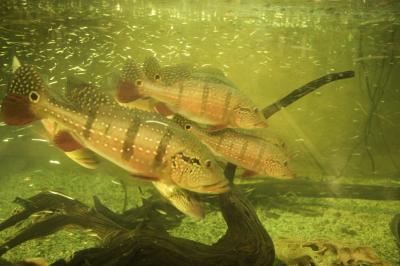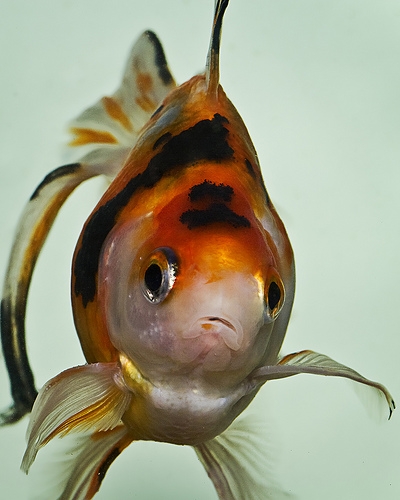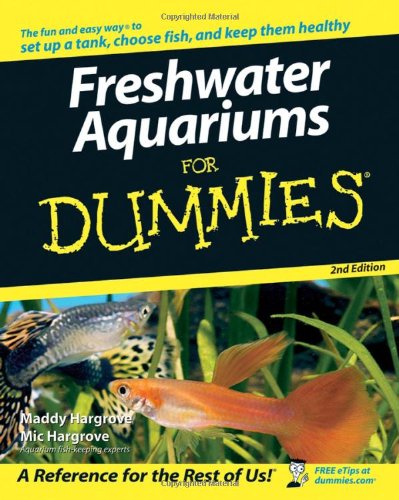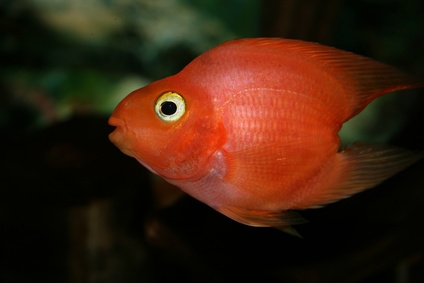
Just about all freshwater aquarium fish reproduce sexually-that is, by combining egg and sperm—but the process by which that occurs, and the rearing of fry that follows, will vary widely from one species to another. Some fish are monogamous (at least during the course of a single breeding cycle), while others will spawn with numerous partners. Some guard their eggs or young, while others are seemingly oblivious to them-or even go so far as to eat them. Generally speaking, though, fish employ one of two reproductive strategies: They either lay eggs or give birth to live fry.
This is the reproductive strategy most comparable to human reproduction. Female livebearers produce eggs, which the male fertilizes by touching his gonopodium to her vent or releasing sperm in it's vicinity. At the end of a gestational period (which can vary in length according to light and water temperature), the female delivers fully-developed fry.
There are a few key differences between human reproduction and that of livebearers, however. For one thing, female livebearers are capable of having a lot more babies at once-often 100 or more, depending on species and the size of the mother. And unlike their human counterparts, many female livebearers can store sperm internally; after giving birth to one batch of fry, they use the stored sperm to fertilize another batch of eggs. In fact, it's not uncommon for a female to give birth to several batches of fry from a single insemination over a period of several months. That's one of the reasons female livebearers, such as guppies or platys, sometimes have what appears to be a virgin birth, delivering fry in tanks where there was no male present to have fathered them.
Once the fry are born, their mother's job is done; she not only does not care for the babies, but she does not seem to recognize them as her offspring and may even try to eat them.
This is by far the most common means of reproduction among fish. Unlike their livebearing counterparts, egg-laying fish do not fertilize or incubate their young internally. Rather, they release eggs and sperm into the water, and when the two come into contact with one another, fertilization takes place. Within the broad category of egg layers, however, fish employ a wide range of different reproductive strategies: Some scatter their eggs; some build nests for them; some deposit them on rocks, wood, or plants; some brood them in their mouths; and a few even bury them.
Egg-scattering fish practice what could be thought of as the aquatic version of free love. They spawn in mid-water, with the females releasing eggs and the males simultaneously releasing a cloud of sperm-a process that can be so fast that it occurs in less than a second as the fish swim past one another. The breeding pair then goes on their separate ways, leaving their eggs to drift down through the water column and land where they may. Those that land in a protected site, such as a rock crevice, may hatch, while those that land in the open are often eaten by other fish, including their own parents. To compensate for this and to ensure that some of their eggs go on to hatch and the fry grow to adulthood, fish that spawn using this strategy tend to produce large numbers of eggs, typically numbering in the hundreds or even thousands. Zebra Danios, Neon Tetras, and Bala Sharks are examples of egg-scattering fish.
Rather than spawn wherever they happen to be when the urge hits, egg depositors deliberately seek out a site in (or on) which to spawn. Some are known as plant choosers because they spawn in clumps of vegetation; others are called substrate choosers because they pick a site, such as a piece of wood or a rock, on which to lay their eggs. In the home aquarium, such fish sometimes consider just about anything to be "substrate," even spawning on the heater or the sides of the tank.
Males of plant-spawning species typically chase or lure the female into a clump of vegetation or a spawning mop; once there, she releases her eggs either en masse or a few at a time, and he simultaneously releases sperm to fertilize them. Substrate choosers frequently clean off their designated spawning site together beforehand.
Plant-spawning parents, such as rainbowfish and some species of killifish, are similar to egg scatterers in that they typically do not guard their eggs. Substrate spawners, however, sometimes do. Discus and angelfish are examples of substrate-choosing fish that guard their eggs.
As their name indicates, mouthbrooders incubate their eggs and/or fry in their mouths to keep them safe from predators-a reproductive strategy that makes them one of the most interesting fish to breed.
Typically, the process begins with the female depositing her eggs on a flat surface, such as a rock, where the male fertilizes them; one parent then gathers them in his or her mouth and incubates them.
There are a couple of variations on this: In a few species of mouthbrooders, the female releases the eggs and picks them up immediately; the male then fertilizes them by releasing sperm into her mouth.
And a few species of South American cichlids allow their eggs to hatch in a nest and then gather the fry in their mouths to protect them from predators as they grow-a technique known as delayed mouthbrooding.
Usually, the female is the one who does the mouthbrooding; however, there are some species in which that task is relegated to the male and even a few in which both parents share in it equally. This strategy is known as biparental mouthbrooding.
Cichlids are among the best-known examples of mouthbrooders, although there are other species that also practice this reproductive strategy, such as some species of bettas.
Like birds, some fish build nests in which to lay and incubate their eggs. In most cases, either the mother or father remains with them to protect them until they hatch and the fry become free swimming. There are two different types of nesting strategies commonly employed by fish-bubble nesting and pit nesting.
Bubble nesters construct elaborate floating nests of saliva bubbles, and in some cases, snippets of vegetation. The breeding pair spawns directly under it, and the fertilized eggs either float into the nest or are picked up by the male and spit into it. The male then guards the nest until the fry hatch and become free swimming. Bettas and gouramis are among the best-known bubble-nest builders.
Pit nesters dig holes in the substrate in which to lay their eggs. The female releases them into the nest, and the male fertilizes them there. At least one of the parents then stands guard over the eggs, fanning fresh water over them with their fins, until the fry hatch and become free swimming. Many catfishes and some cichlids build pit nests in which to spawn.
Some fish will only spawn in enclosed spaces such as caves or shells. A few fish even bury their eggs to protect them. Some killifish, for instance, deposit their eggs in the mud, then die when the water dries up. The eggs remain dormant in the substrate, hatching the following year, when the rainy season restores their habitat.
 How to Kill Ich in a Fresh Water Fish Tank
How to Kill Ich in a Fresh Water Fish Tank
How to Kill Ich in a Fresh Water Fish Tank
How to Kill Ich in a Fresh Water Fish Tank
 What Are the Causes of Ick in Fish?
What Are the Causes of Ick in Fish?
Wh
What Are the Causes of Ick in Fish?
What Are the Causes of Ick in Fish?
Wh
 Advantages of a Freshwater Aquarium
Owning a freshwater aquarium
Advantages of a Freshwater Aquarium
Owning a freshwater aquarium
 How to Reduce Nitrates in Fish Tank
You can always can find some nitrates in a typ
How to Reduce Nitrates in Fish Tank
You can always can find some nitrates in a typ
 Compatibility Between Freshwater Tropical Fish
Compatibility Between Freshwater Tropical Fish
Compatibility Between Freshwater Tropical Fish
Compatibility Between Freshwater Tropical Fish
Copyright © 2005-2016 Pet Information All Rights Reserved
Contact us: www162date@outlook.com